After the Concept Ori at Dell and the ThinkPad X1 Fold from Lenovo, ASUS is in turn trying out convertible Windows tablets with foldable screens. The Taiwanese manufacturer, however, has an advantage in the face of the competition: it has seen the big picture. Unveiled this January 5 as part of CES 2022, its ZenBook 17 Fold OLED relies on a large 17.3-inch foldable OLED screen.
For comparison, the Concept Ori from Dell was limited to a total diagonal of 13 inches, against just 13.3 inches for the Lenovo ThinkPad X1 Fold, launched at the end of 2020. Suffice to say that the ZenBook 17 Fold OLED does not box in the same category when it comes to dimensions. Its large screen allows it to be relevant in the different contexts of use suggested by ASUS.
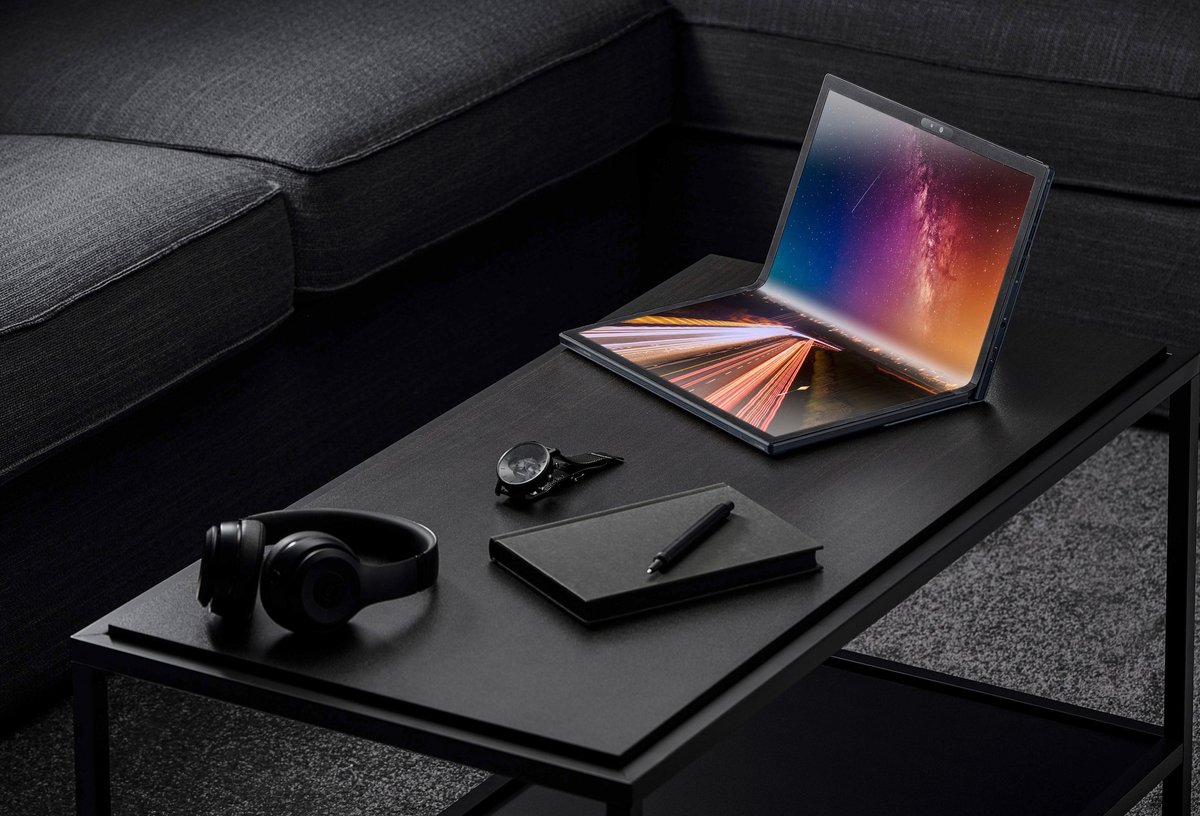
ZenBook 17 Fold OLED: ASUS tries the foldable adventure
To be as functional as possible as soon as it comes out of its box, the device is supplied with an ASUS ErgoSense Bluetooth keyboard designed specifically for it. Indeed, if it is of course possible to display a virtual keyboard on the ZenBook 17 Fold, the foldable machine from ASUS only takes on its full meaning when you add its physical keyboard.
The latter can be placed directly on the screen to take the classic shape of a laptop PC (with a diagonal of 12.5 inches in 3: 2 format) or be placed next to the 17.3 inch screen completely deployed (we then switch to 4: 3 format) and installed on a stand facing the user. This is an excellent way to take advantage of a large display area in a mobile context. Because, once folded, the device finds more or less the measurements of an ultraportable (287.6 x 189.3 x 31.9 mm for 1.99 kilograms with the keyboard).
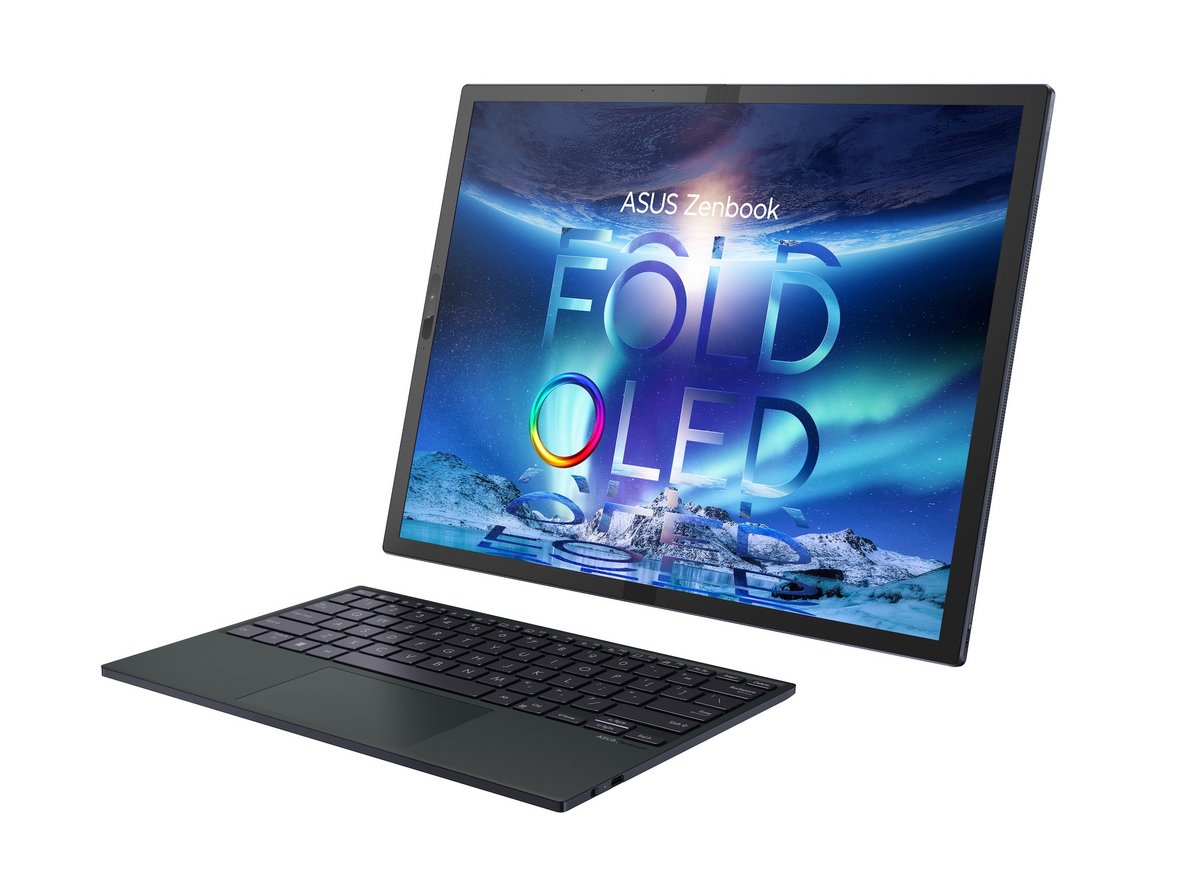
If, at this stage, ASUS has not yet revealed all the technical specifications of its ZenBook 17 Fold, we already know that it is relying on an OLED panel certified VESA DisplayHDR 500 True Black. This panel benefits from a 2.5K definition (2,560 by 1,920 pixels), displays a contrast of 1,000,000: 1, fully covers the DCI-P3 gamut and is limited to only 0.2 ms response time. The refresh is nevertheless limited to 60 Hz.
Under this screen, ASUS evokes the presence of the latest low-power Intel Alder Lake processors (and in particular the Core i7-1250U expected on the high-end versions of the device). The chosen processor is coupled with a maximum of 16 GB of LPDDR5, while the storage can go up to 1 TB of M.2 NVMe SSD.
On the connectivity side, the ZenBook 17 Fold has two Thunderbolt 4 USB-C ports and a headphone jack. Its connectivity is based on Wi-Fi 6E and Bluetooth 5.2. The machine is equipped for the rest of a battery of 75 Wh and an audio system signed Harman Kardon, certified Dolby Atmos. ASUS finally announces that its screen will be able to withstand 30,000 folding and unfolding before its hinge shows signs of weakness.
Expected for mid-2022, the ZenBook 17 Fold will be launched from 3,999 euros, ASUS France told us.
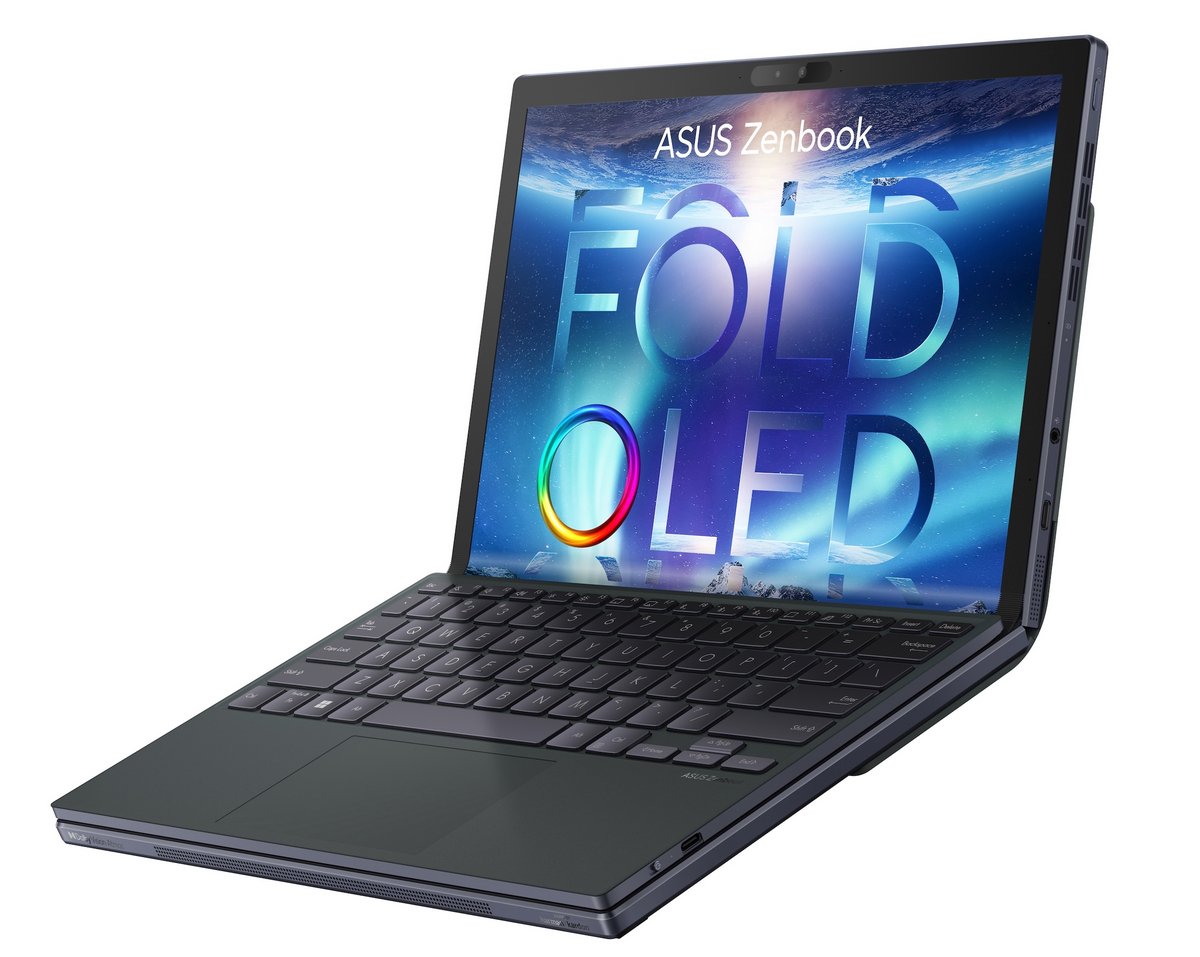
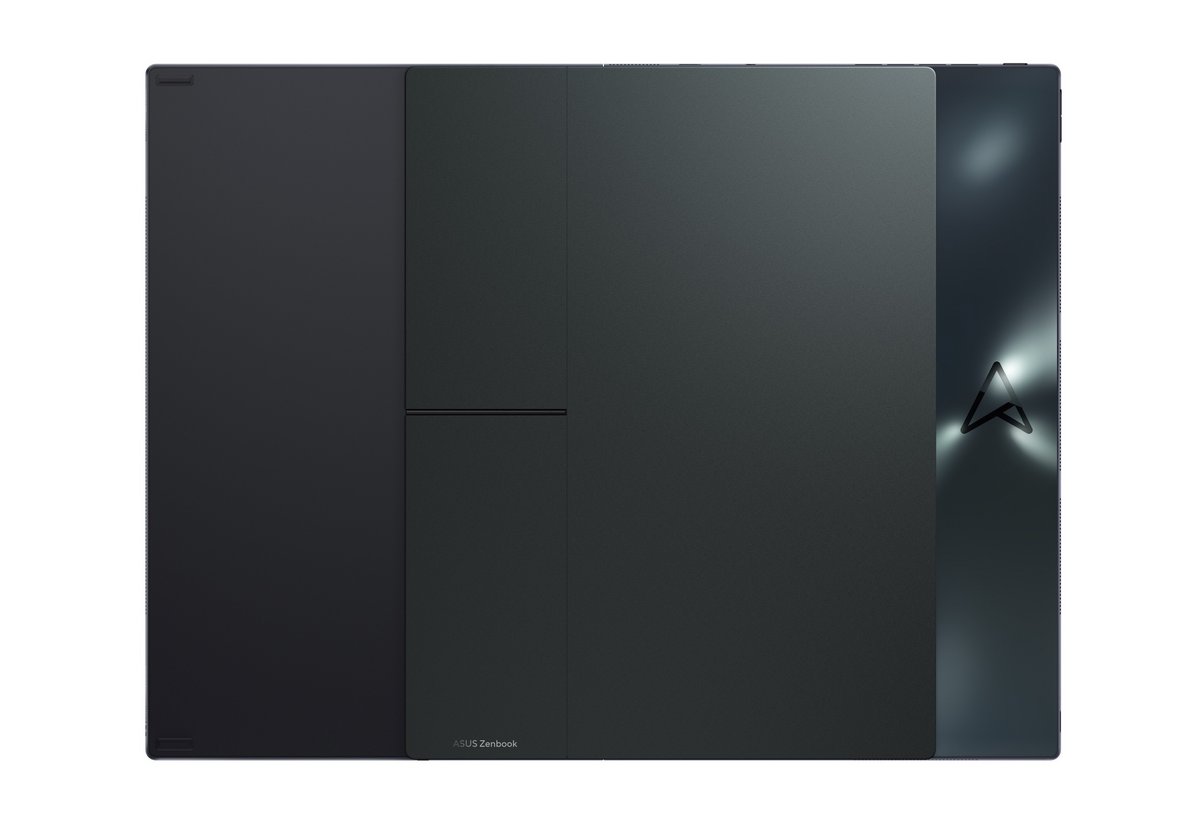
© ASUS
ZenBook 14 OLED: a new plush ultraportable that plays at both Intel and AMD
Along with this intriguing folding machine, ASUS has also taken care to announce its new ZenBook 14 OLED. The firm remains true to its credo: to use OLED screens as much as possible on its laptops. We won’t complain. The device is thus adorned with a 2.8K OLED panel (2880 by 1800 pixels) of 14 inches with a 16:10 ratio. This infinite contrast screen (1,000,000: 1) covers 100% of the DCI-P3 spectrum and also benefits from a flash response time of 0.2 ms. It also benefits from a refresh rate of 90 Hz and a VESA DisplayHDR 500 True Black certification. The display quality should therefore be more than at the rendezvous, there too.
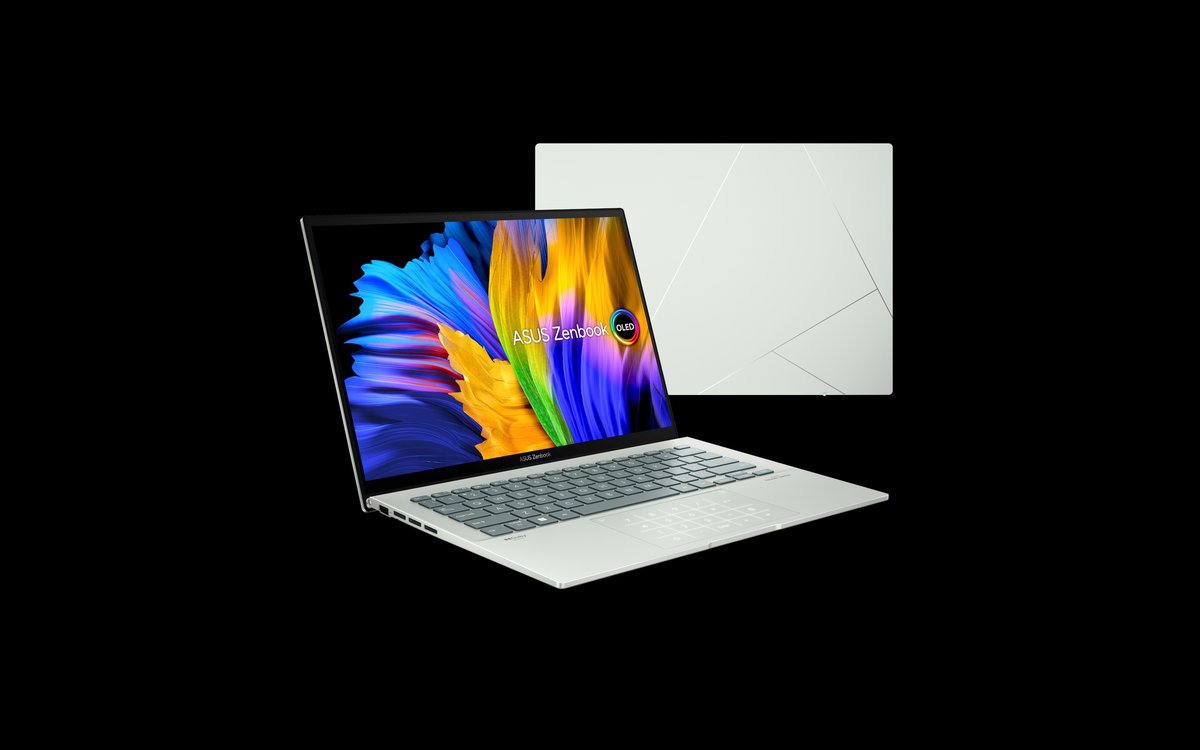
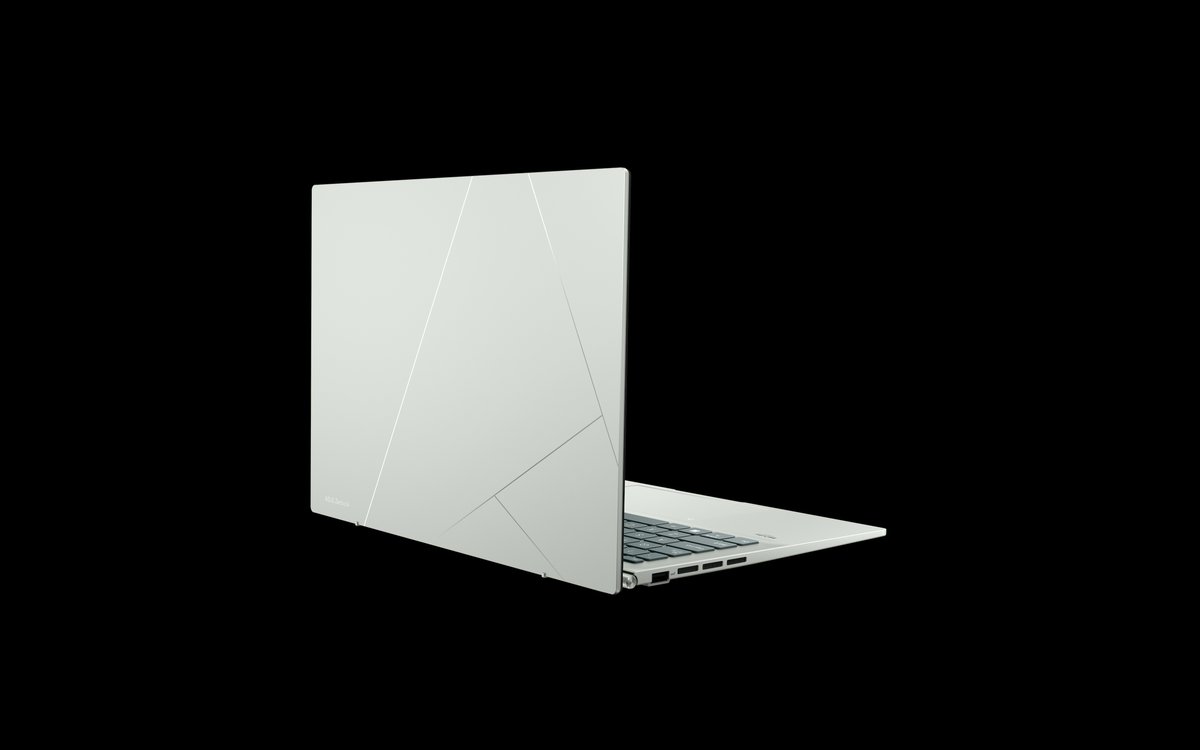
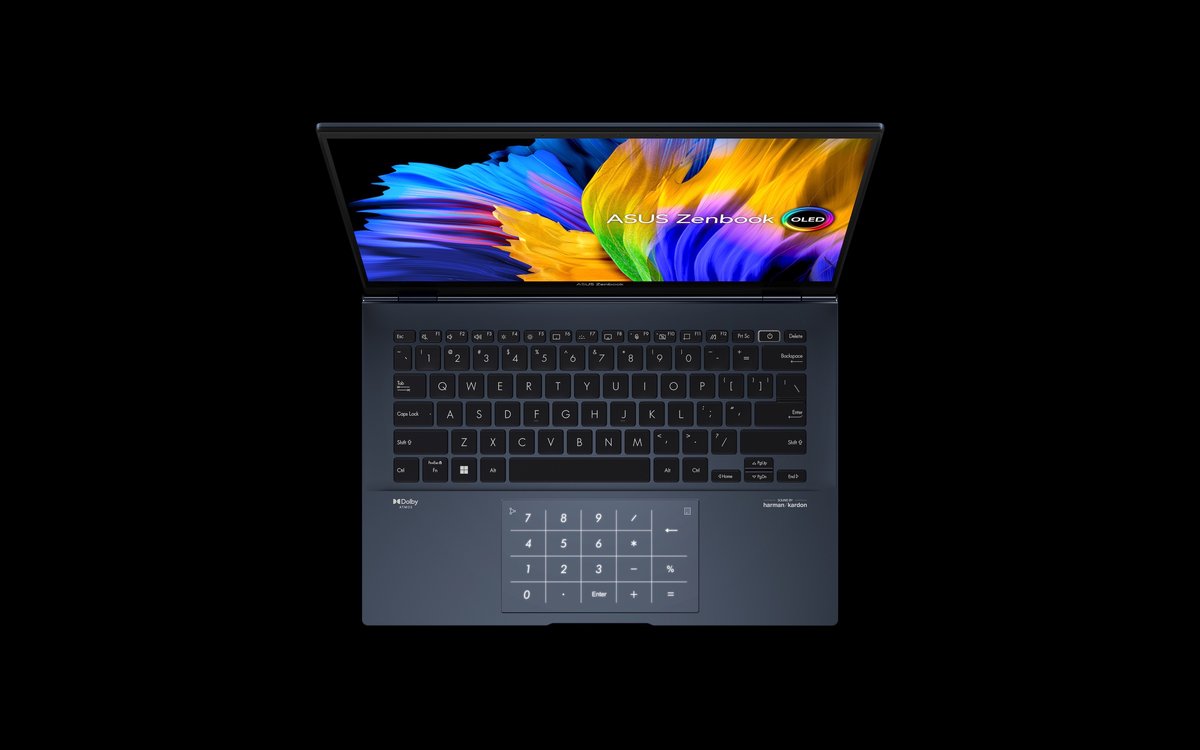
© ASUS
The ZenBook 14 OLED will hit the market in AMD and Intel versions. In both cases, we are entitled to the latest generation chips: the AMD Ryzen 7 5825U or Ryzen 5 5625U (Cezanne refresh) on one side; and the Intel Core i7 1260P or i5 1240P (Alder Lake) on the other. AMD chips are backed by a maximum of 16 GB of LPDDR4X at 4266 MHz, while newer Intel processors have the advantage of being supported by a maximum of 16 GB of LPDDR5 at 4800 MHz. Regardless of the model chosen, the storage can extend up to 1 TB of M.2 SSD, with 6E Wi-Fi, Bluetooth 5.2 and a 75 Wh battery.
Available in two colors, the ZenBook 14 OLED does not exceed 313.6 x 220.6 x 16.9 mm for 1.39 kilo. It also benefits from a Harman Kardon audio system, certified Dolby Atmos. Finally, there are two USB-C 3.2 ports (Thunderbolt 4 on the Intel model), a USB-A 3.2 Gen2 port, an HDMI 2.0 output, a micro SD card reader and a headphone output.
The ZenBook 14 OLED will be available during the second quarter of 2022 from 1499 euros.
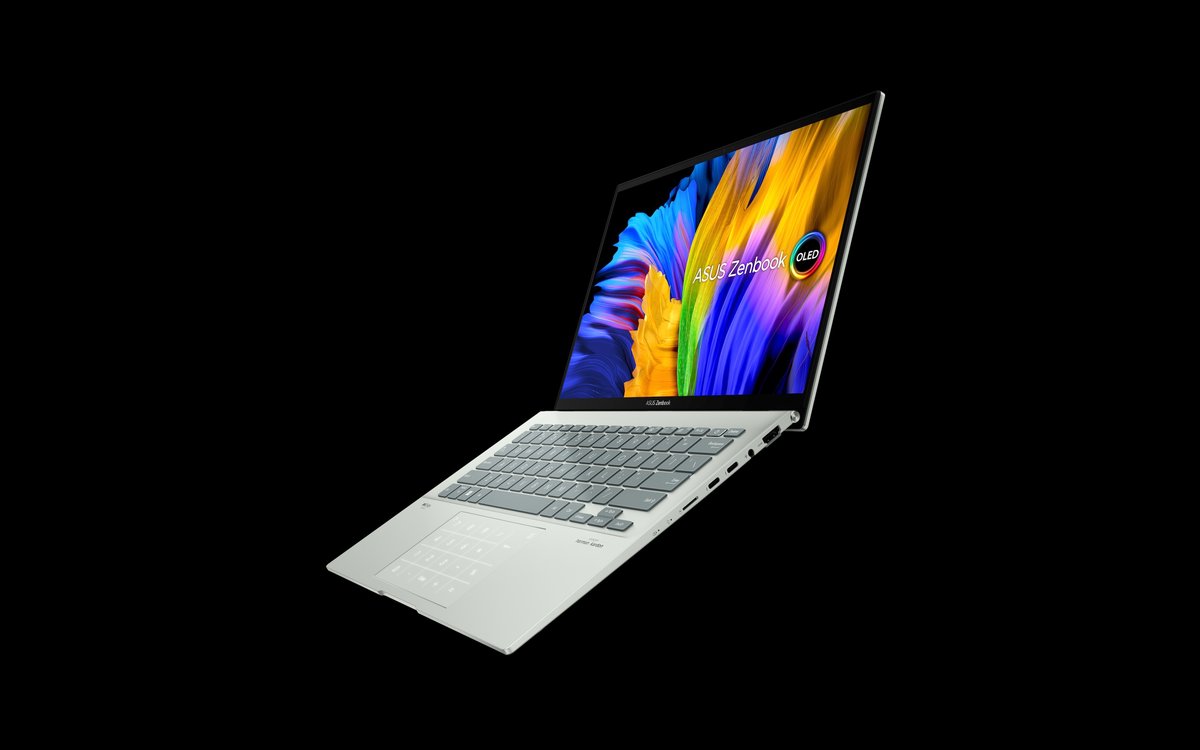
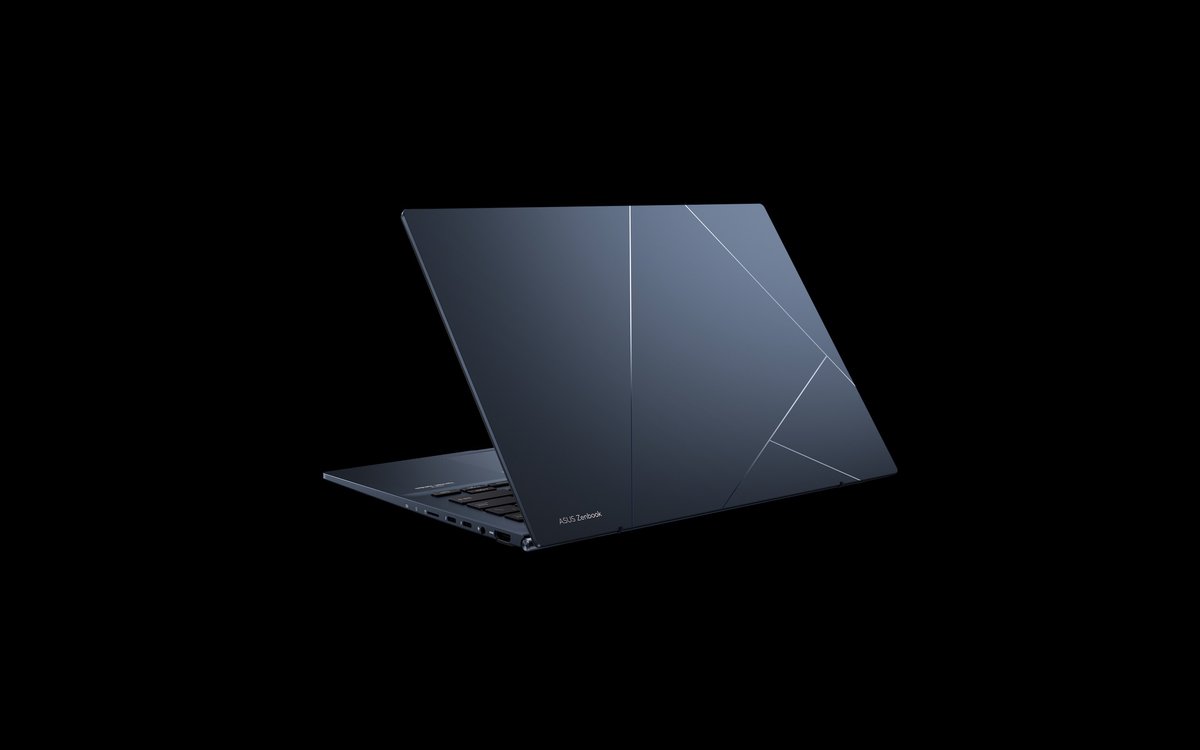
© ASUS
Sources: ASUS Briefing, ASUS press releases

6